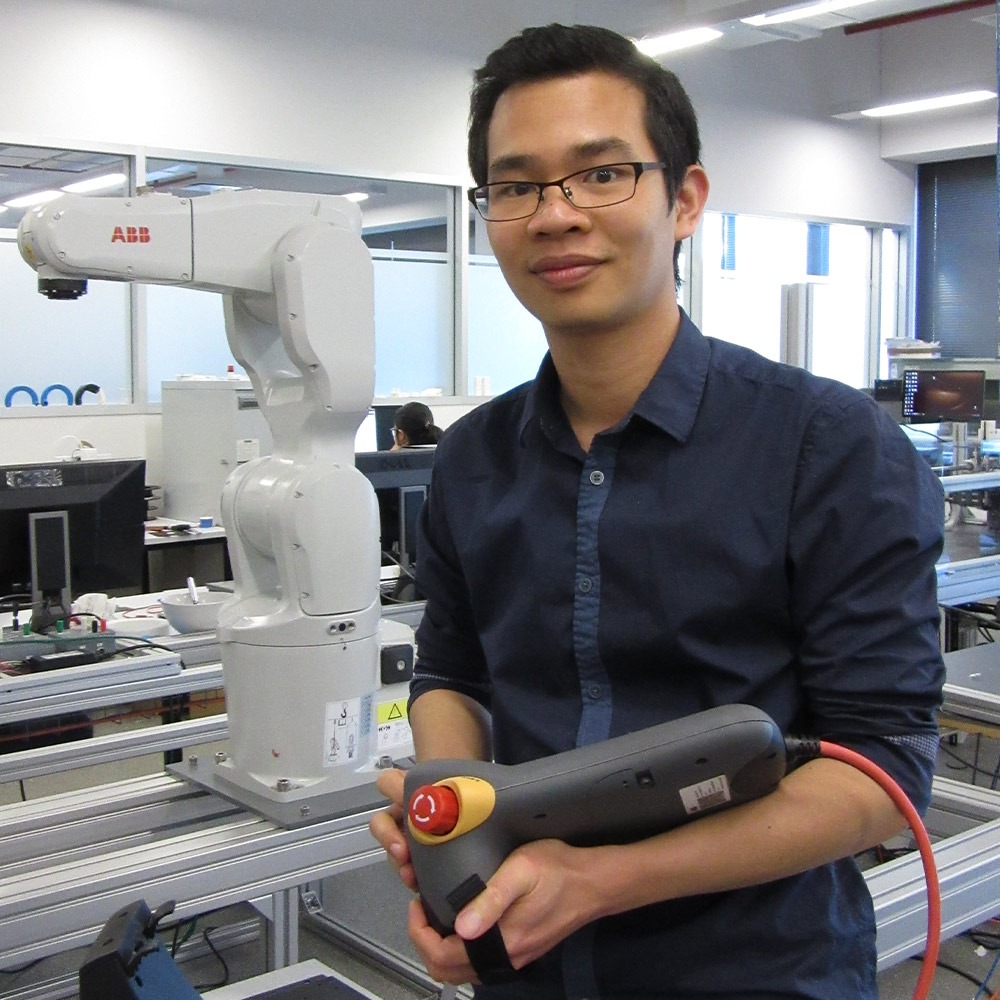17 Jun Student | Vu Trong Thien (Terence) | Materials and Manufacturing
PhD students
Vu Trong Thien (Terence)
University of Wollongong (Supervisor: Zengxi Pan)
PhD topic – Automated assembly for rolling stock fabrication in rail industry

Research summary
Across all manufacturing activities, assembly processes account for about as much as 50 per cent of the total production time, 20 per cent of the total unit production cost, and 30-50 per cent of the labour expense. Automation of assembly processes essentially focuses on creating a detailed assembly plan to construct the final product from individual separate components. However, assembly planning is commonly time consuming, error prone and dependent on the skills of the engineers. This research focuses on developing a platform that can automatically generate the assembly plan for rolling stock fabrication, based on 3D models.
Expected completion date
December 2020
Key achievements
- Despite gravity being one of the most prevalent force in practical applications, stability constraints are among the most complex and thus are either not thoroughly considered or presumed in most researches in assembly planning. This project provides a comprehensive review and systematic classification of stability analysis problem, and subsequently proposes a method that combines the robustness of force analysis based on classical physics and the computational efficiency of matrix representation.
- Data extraction usually requires access to 3D models in their native software, resulting in a compatibility problem when the models were processed across multiple entities with different software packages. The platform developed in this project utilizes computational geometry techniques to analyse 3D models encoded in a lightweight universal format. The platform can perform both stability assessment and collision detection based on the data derived via automated geometric reasoning.
- By integrating multiple analysis modules, the platform offers a completely automated workflow that take in 3D models of the assembly and generate the optimal sequence of feasible operations as well as the corresponding assembly paths for the robot to follow.


